Five years of planning and preparation for the Apollo-Soyuz Test Project (ASTP) came to fruition on July 15, 1975. In launches from space ports separated by nearly 7,000 miles, first Soviet cosmonauts Aleksei A. Leonov and Valeri N. Kubasov launched aboard their Soyuz spacecraft, followed 7.5 hours later by American astronauts Thomas P. Stafford, Vance D. Brand, and Donald K. “Deke” Slayton aboard their Apollo craft. For the next two days, the two spacecraft conducted maneuvers to achieve the first international docking in space followed by two days of crew exchanges between the two vehicles, including the first historic handshake in space between an American astronaut and a Soviet cosmonaut.
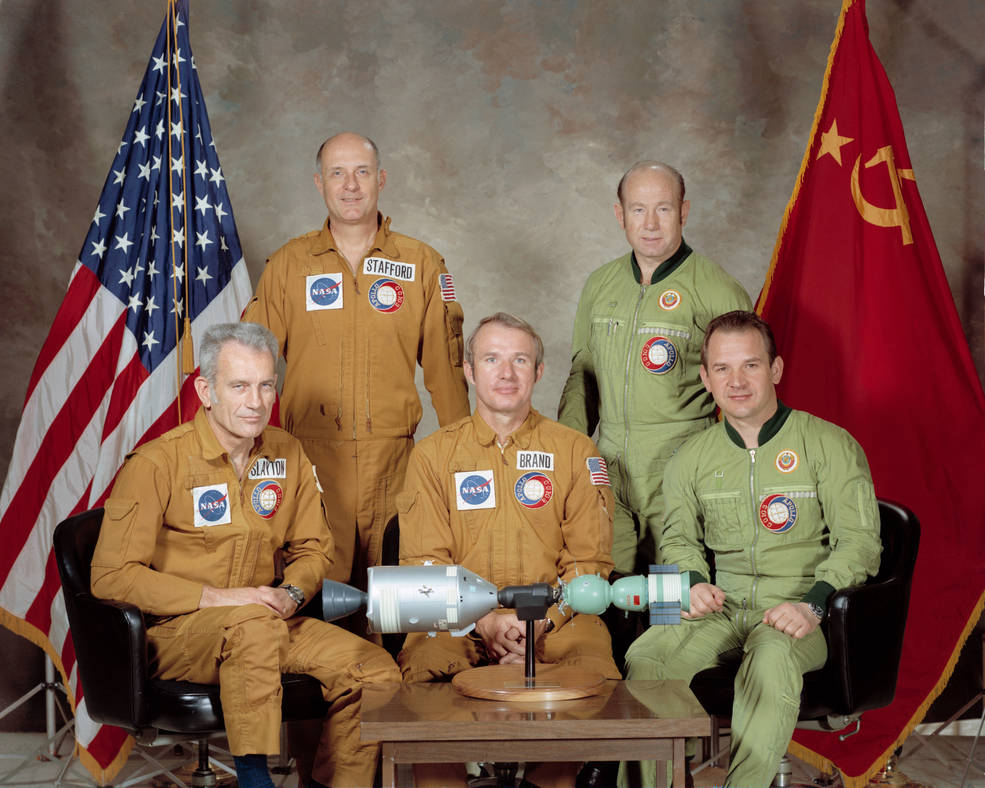
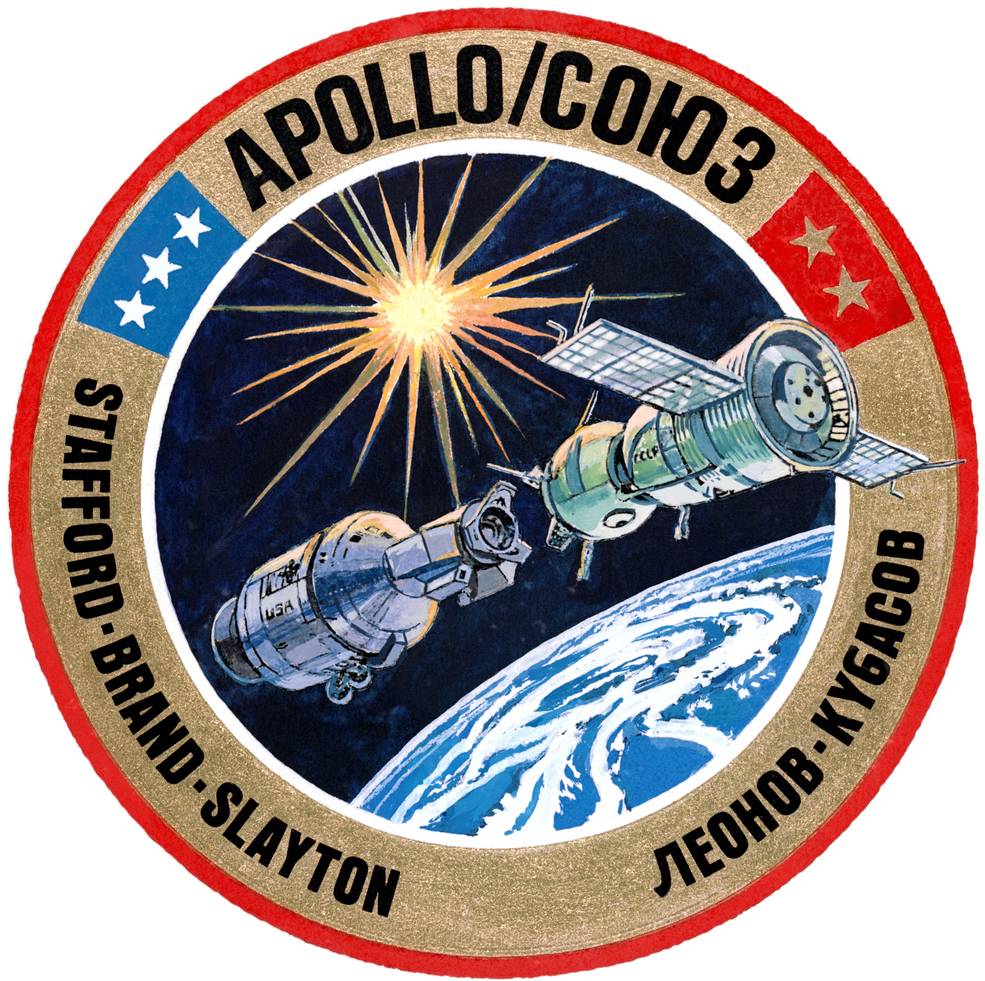
Left: Official ASTP crew portrait (front, left to right) Slayton, Brand, and
Kubasov; (back, left to right) Stafford and Leonov. Right: Official ASTP crew patch.
In a first for the Soviet Union, they broadcast the launch of Soyuz-19 to an eager global television audience. Earlier in the day at the Baikonur Cosmodrome in Soviet Kazakhstan, cosmonauts Leonov and Kubasov had donned their Sokol launch and entry suits and took the transfer bus to Launch Pad 1, also known as Gagarin Start, since Yuri A. Gagarin launched from that very pad 14 years earlier on the world’s first crewed mission. The two took the elevator to the top of the rocket and climbed aboard the Soyuz spacecraft, strapping themselves into the Descent Module’s form-fitting couches. Liftoff came precisely at 5:20 PM local time at Baikonur, which was 8:20 AM at the Kennedy Space Center (KSC) in Florida. Eight minutes and 50 seconds later, Leonov and Kubasov were in orbit and the spacecraft’s antennas and solar arrays deployed. Control of the mission switched from Baikonur to the Flight Control Center in Kaliningrad, now Korolev, outside Moscow. American ASTP Director Glynn S. Lunney telephoned his Soviet counterpart Konstantin D. Bushuyev to congratulate him on the successful launch. About six hours after liftoff, the cosmonauts performed the first of two maneuvers to circularize their spacecraft’s orbit in preparation for the rendezvous and docking. The only problem they encountered during the first day was a balky black-and-white TV camera. They put off trying to fix it until the next day and went to sleep.
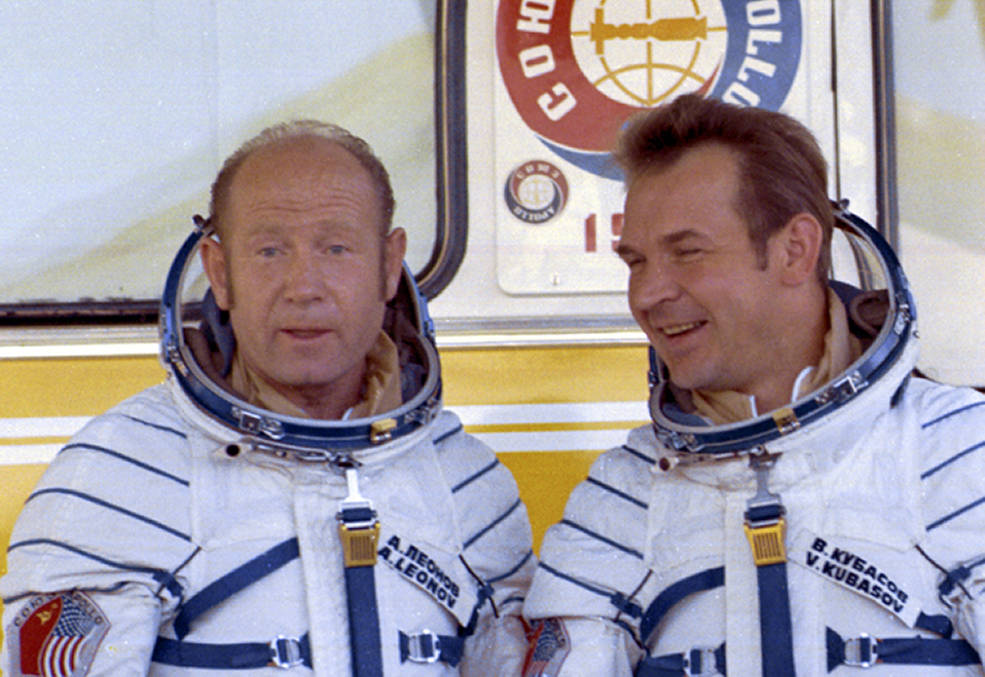
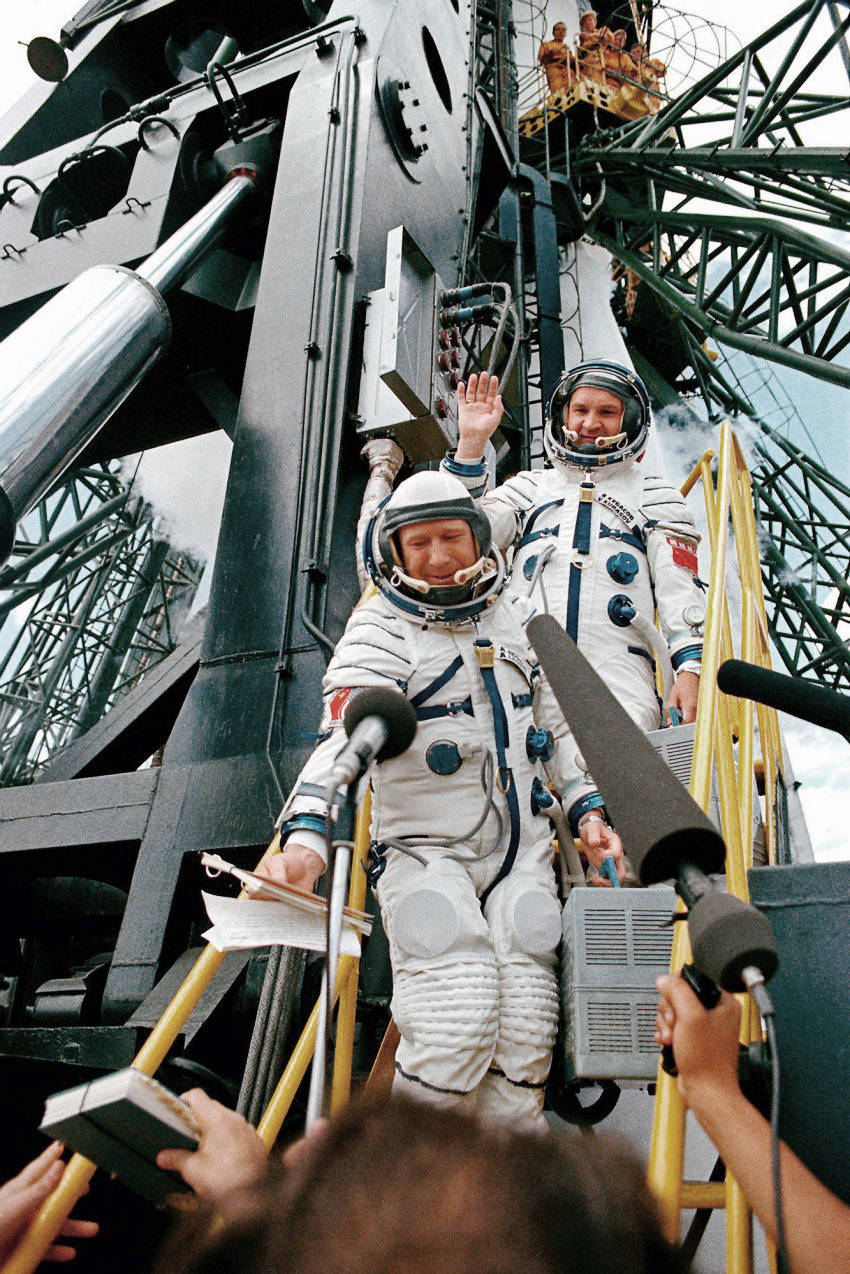

Left: Soyuz cosmonauts Leonov (left) and Kubasov prepare to board the bus for the ride to
the launch pad. Middle: Leonov (front) and Kubasov at the base of the launch pad preparing to take
the elevator up to their spacecraft. Right: Launch of Soyuz 19 to begin the flight portion of ASTP.
Apollo astronauts Stafford, Brand, and Slayton were still asleep when Leonov and Kubasov lifted off, while workers at KSC’s Launch Pad 39B filled the Saturn IB rocket’s liquid oxygen tanks. The astronauts watched a replay of the Soyuz launch while eating breakfast just prior to suiting up, following which they took the transfer van to the launch pad. They rode the elevator to the top of the rocket and entered their Apollo spacecraft, strapping themselves into their couches. The Saturn IB lifted off precisely on schedule at 3:50 PM local time, exactly 7.5 hours after the Soyuz launch. An estimated 750,000 people lined nearby beaches and causeways to watch the final Saturn rocket take to the skies. Soviet Ambassador Anatoli F. Dobrynin and his wife watched the liftoff from the Launch Control Center.
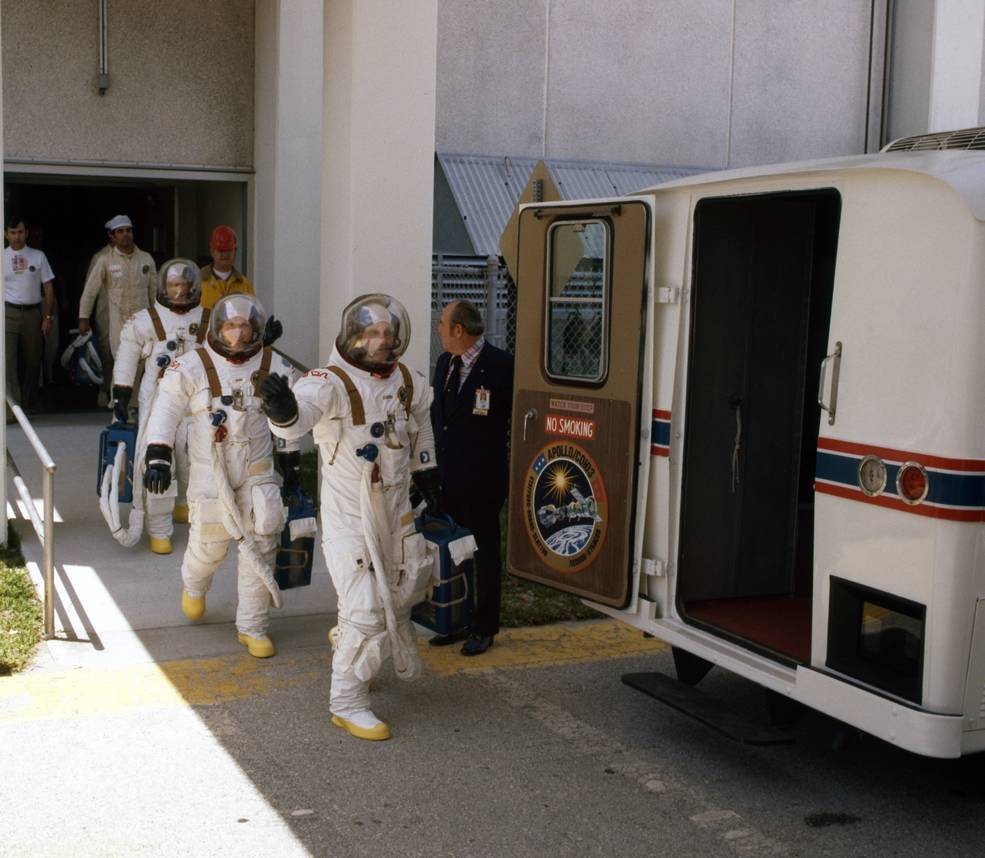
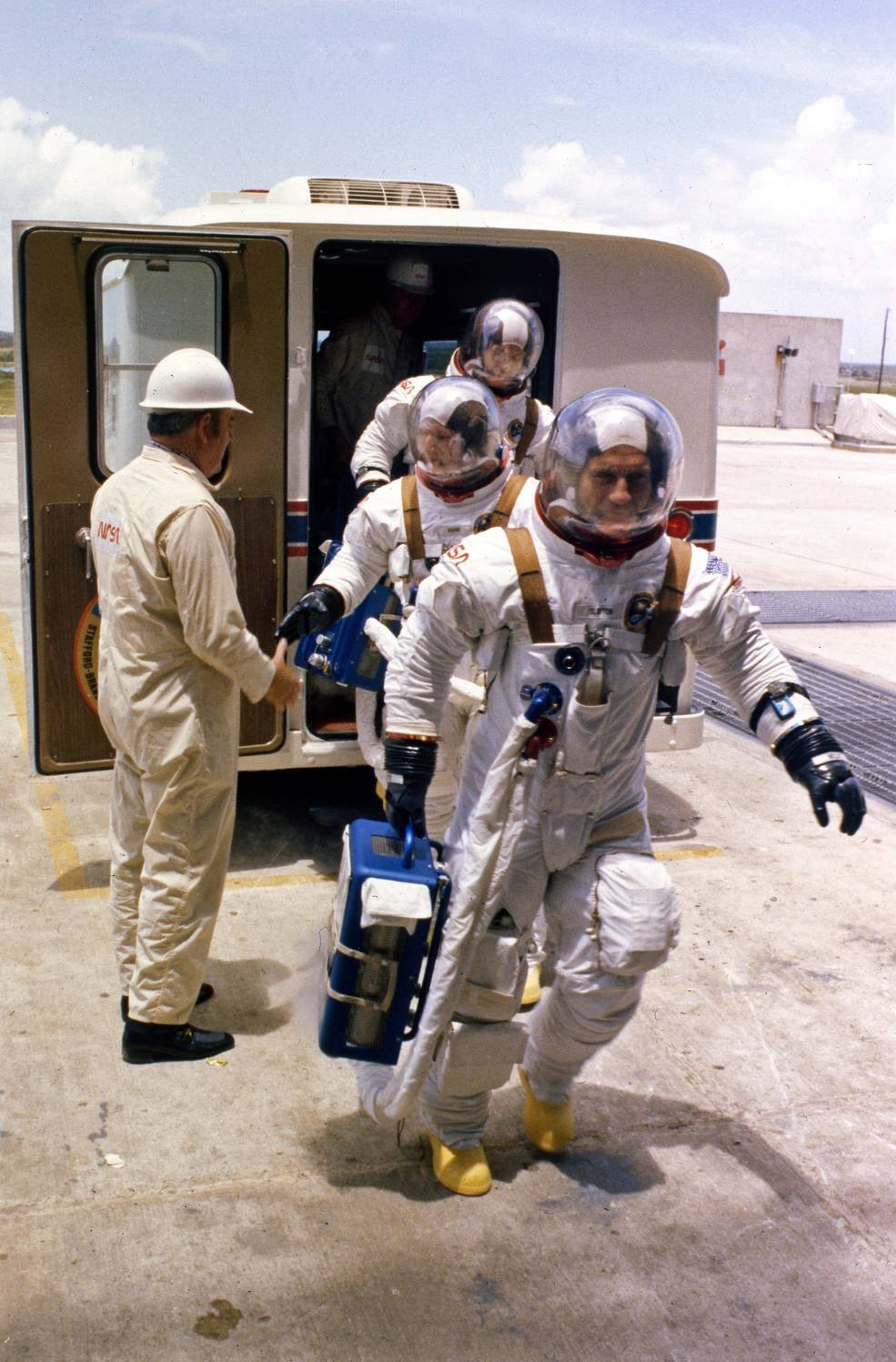
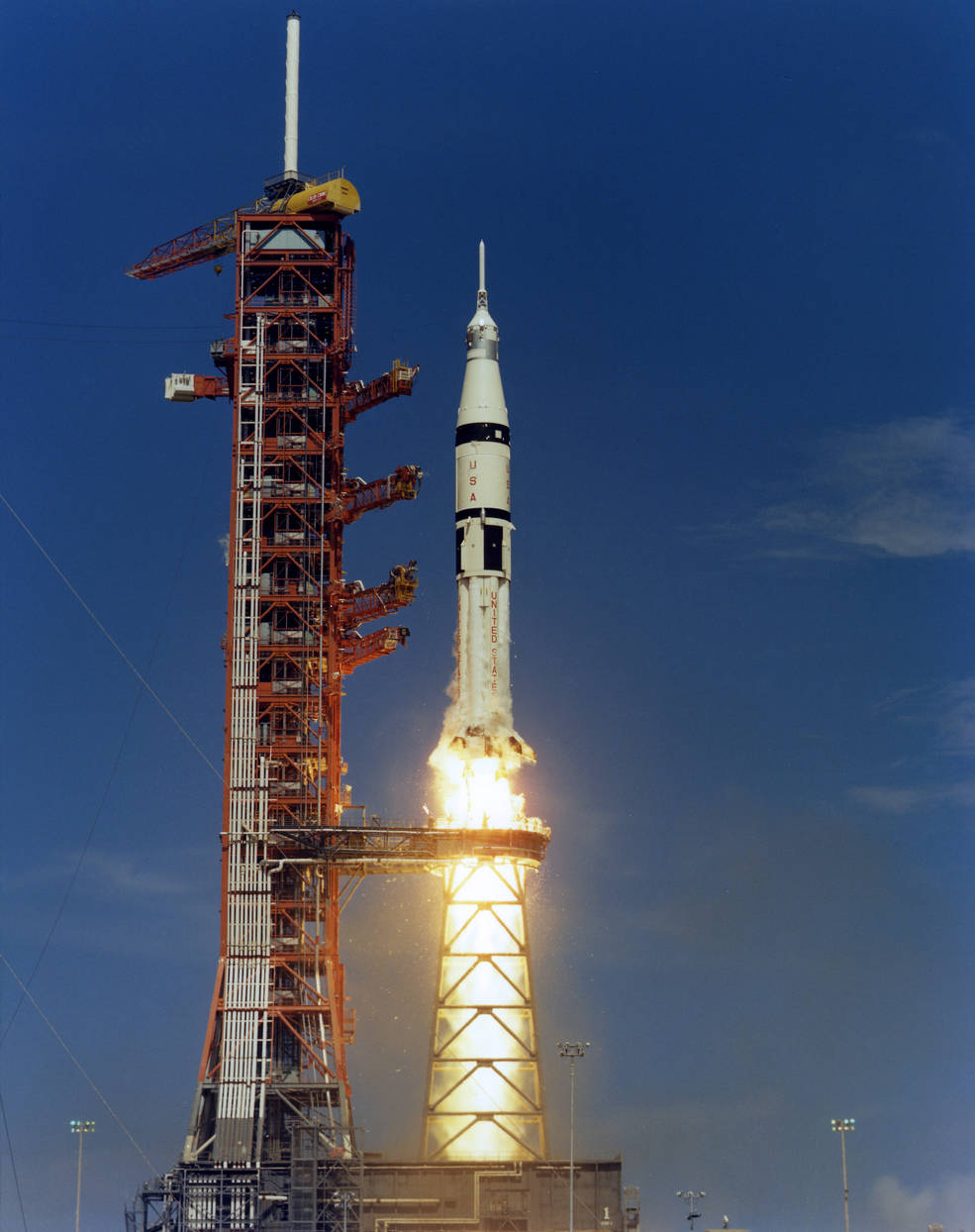
Left: Apollo crew (front to back) about to board the astronaut van for the ride out to the
launch pad. Middle: Apollo crew (front to back) arriving at Launch Pad 39B. Right: Liftoff of
the final Saturn rocket on the ASTP mission.
Once the rocket cleared the launch tower, controllers in Mission Control at the Johnson Space Center in Houston took over monitoring the mission, led by Flight Director M.P. “Pete” Frank with ASTP support astronaut Richard L. Truly serving as Capcom, or Capsule Communicator. The crew reached orbit after 9 minutes 56 seconds, and first time space traveler Brand exclaimed exuberantly, “мы находимся на орбите!,” Russian for “We’re in orbit!” About an hour later, Stafford completed the transposition and docking maneuver, extracting the Docking Module (DM) from the now-spent rocket’s S-IVB upper stage. The astronauts tested communicating to Mission Control via the ATS-6 communications satellite in geosynchronous orbit positioned over central Africa, enabling the crew to talk and send data to the ground for 55 minutes during each orbit. This represented a significant improvement over previous missions and offered a preview of future communications networks in the Space Shuttle era. The astronauts performed the first in a series of maneuvers to bring them closer to Soyuz over the next two days. On a lighter note, Stafford reported that a Florida super mosquito had stowed aboard the spacecraft, and suggested the crew might feed it to the fish that were part of a scientific experiment. The next shift took over in Mission Control, with Neil B. Hutchinson replacing Frank as Flight Director and ASTP support astronaut Karol J. “Bo” Bobko taking over for Truly as Capcom. Just before going to sleep, Stafford reported that Brand encountered a problem removing the docking probe assembly to be able to open the hatch to the DM. The crew went to sleep as Mission Control devised a solution to the problem. Flight Director Donald R. “Don” Puddy and Capcom Robert L. “Crip” Crippen took over in Mission Control while the crew slept.
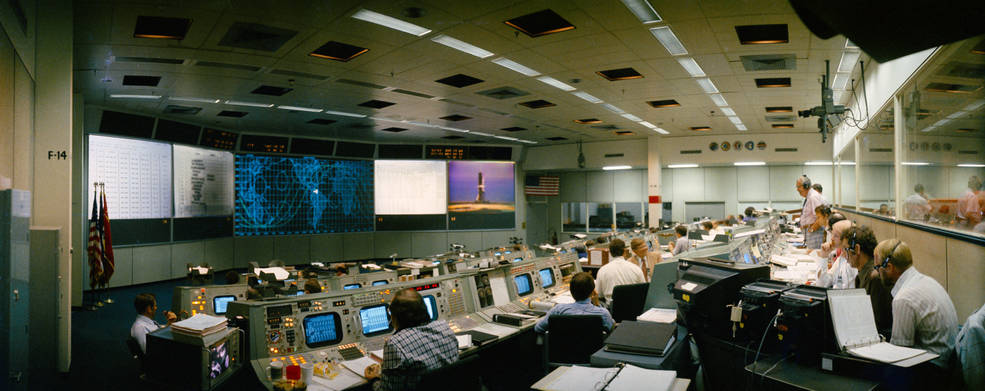
Flight controllers in Mission Control awaiting the Apollo launch.
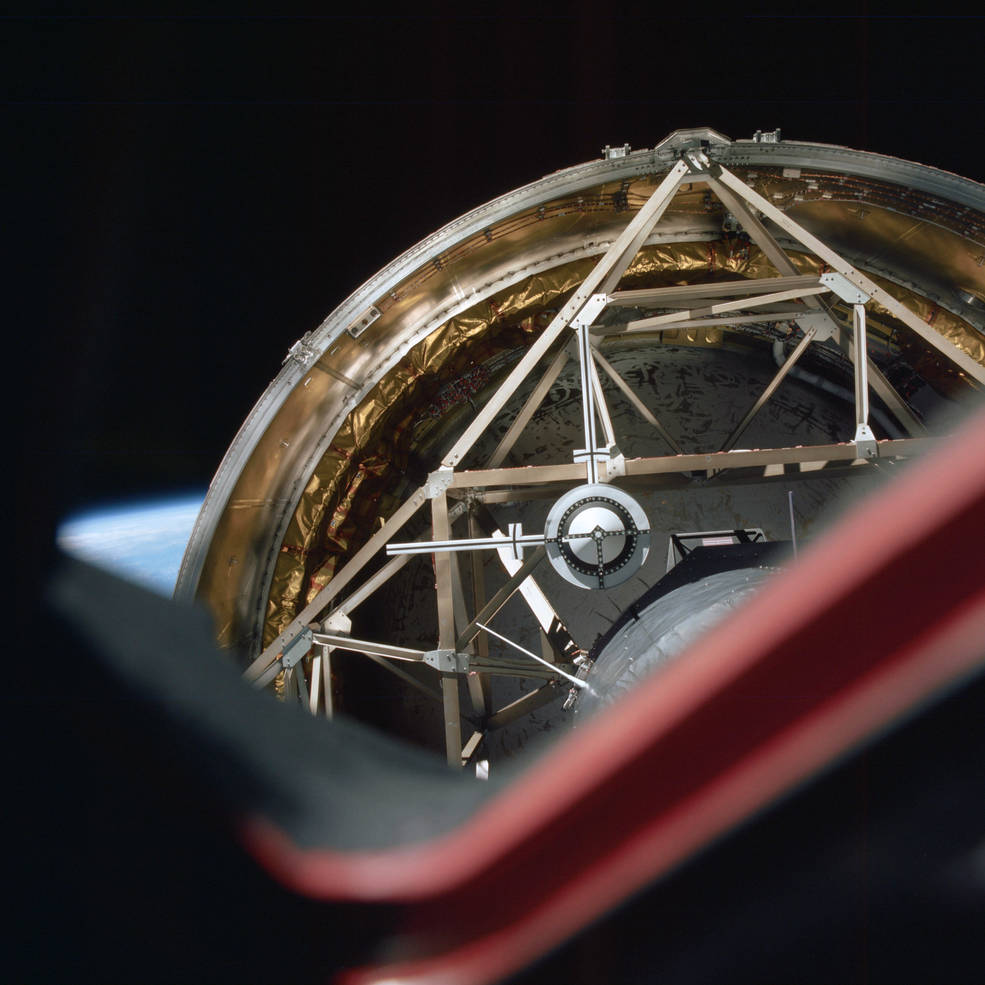
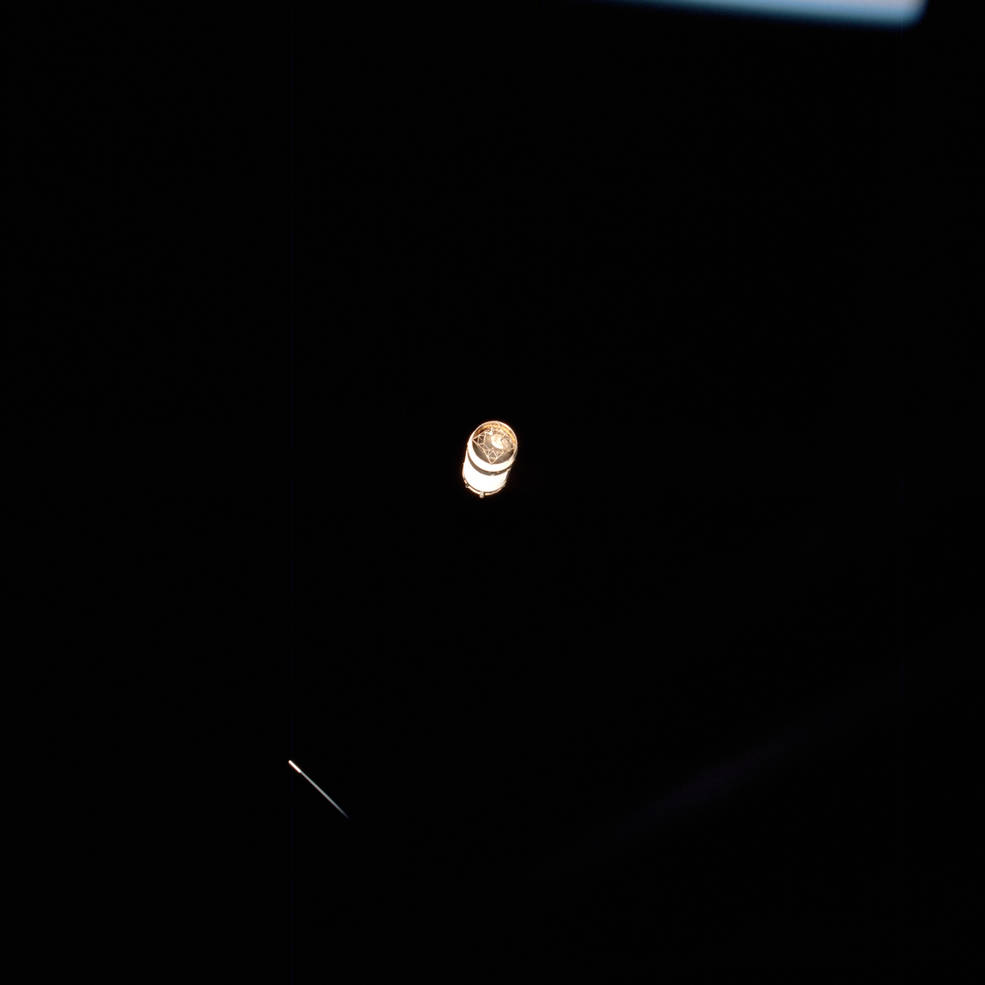
Left: Apollo during the transposition, docking and extraction maneuver.
Right: The discarded S-IVB third stage of the Saturn rocket.
The next day, the crews aboard Soyuz and Apollo awakened and continued their maneuvers to refine their spacecraft’s trajectories for docking the next day. Leonov and Kubasov continued to troubleshoot the balky black-and-white television camera, but despite their efforts were unable to get it working, and used their color TV camera to beam down scenes from inside their spacecraft. They talked via radio with cosmonauts Pyotr I. Klimuk and Vitali I. Sevastyanov who were nearing the end of their two-month mission aboard the Salyut-4 space station. With the two cosmonauts aboard Salyut and the five ASTP crewmembers, a record-tying seven people were in space at the same time, prompting Klimuk to say, “these are the magnificent seven.” Leonov and Kubasov reduced the pressure aboard their spacecraft in preparation for the docking and joint activities. Aboard Apollo, Stafford, Brand, and Slayton were successful in removing the docking probe, allowing them to open the hatch to the DM. The trio worked on several of their in-flight experiments. Both crews began their sleep periods, ahead of the following day’s historic docking. While they slept, orbital mechanics closed the gap between the two spacecraft by about 160 miles every orbit.
To be continued…

























